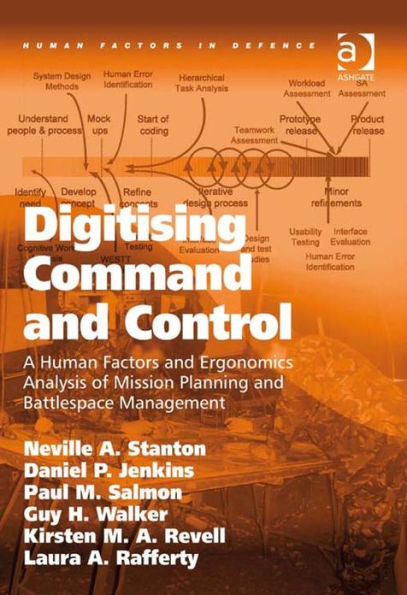This book presents a human factors and ergonomics evaluation of a digital Mission Planning and Battle-space Management (MP/BM) system. An emphasis was placed on the activities at the Brigade (Bde) and the Battle Group (BG) headquarters (HQ) levels. The analysts distributed their time evenly between these two locations. The human factors team from Brunel University, as part of the HFI DTC, undertook a multi-faceted approach to the investigation, including:
- observation of people using the traditional analogue MP/BM processes in the course of their work
- cognitive work analysis of the digital MP/BM system
- analysis of the tasks and goal structure required by the digital MP/BM
- assessment against a usability questionnaire
- analysis of the distributed situation awareness
- an environmental survey.
The book concludes with a summary of the research project's findings and offers many valuable insights. For example, the recommendations for short-term improvements in the current generation of digital MP/BM system address general design improvements, user-interface design improvements, hardware improvements, infrastructure improvements and support improvements. In looking forward to the next generation digital MP/BM systems, general human factors design principles are presented and human factors issues in digitising mission planning are considered.
This book presents a human factors and ergonomics evaluation of a digital Mission Planning and Battle-space Management (MP/BM) system. An emphasis was placed on the activities at the Brigade (Bde) and the Battle Group (BG) headquarters (HQ) levels. The analysts distributed their time evenly between these two locations. The human factors team from Brunel University, as part of the HFI DTC, undertook a multi-faceted approach to the investigation, including:
- observation of people using the traditional analogue MP/BM processes in the course of their work
- cognitive work analysis of the digital MP/BM system
- analysis of the tasks and goal structure required by the digital MP/BM
- assessment against a usability questionnaire
- analysis of the distributed situation awareness
- an environmental survey.
The book concludes with a summary of the research project's findings and offers many valuable insights. For example, the recommendations for short-term improvements in the current generation of digital MP/BM system address general design improvements, user-interface design improvements, hardware improvements, infrastructure improvements and support improvements. In looking forward to the next generation digital MP/BM systems, general human factors design principles are presented and human factors issues in digitising mission planning are considered.

Digitising Command and Control: A Human Factors and Ergonomics Analysis of Mission Planning and Battlespace Management

Digitising Command and Control: A Human Factors and Ergonomics Analysis of Mission Planning and Battlespace Management

Product Details
| ISBN-13: | 9781409486114 |
|---|---|
| Publisher: | Ashgate Publishing Ltd |
| Publication date: | 10/01/2012 |
| Series: | Human Factors in Defence |
| Sold by: | Barnes & Noble |
| Format: | eBook |
| File size: | 9 MB |
